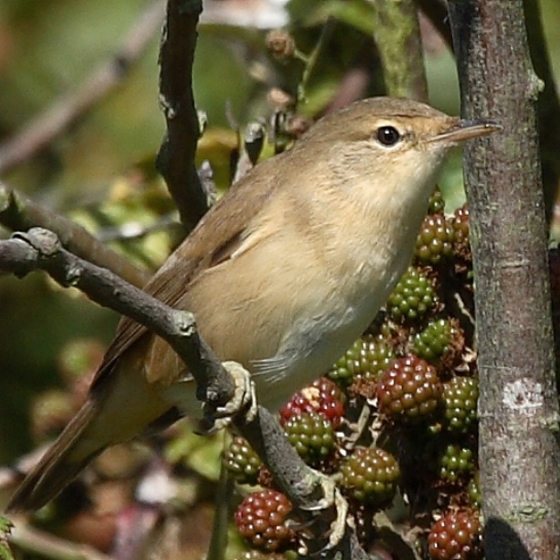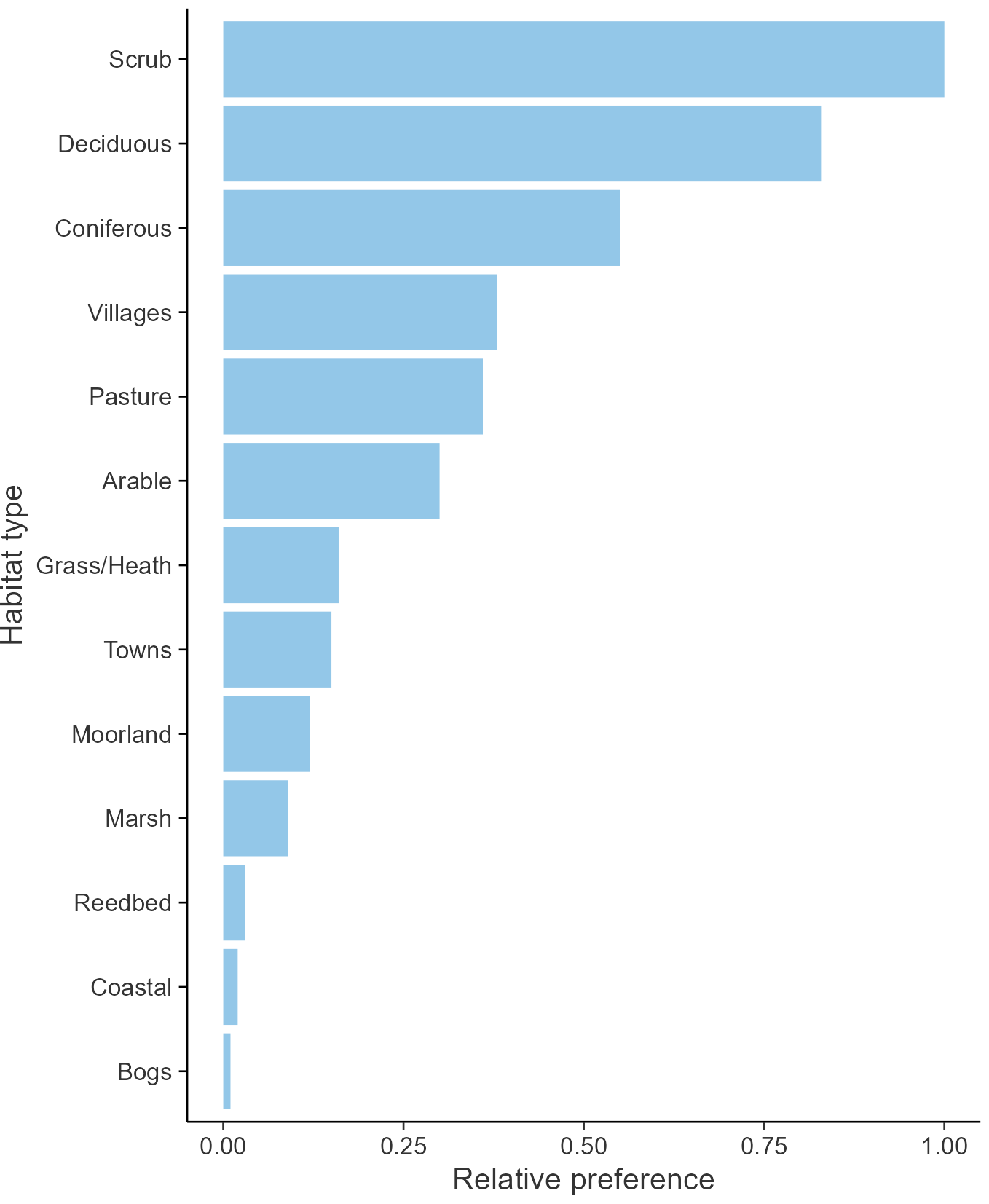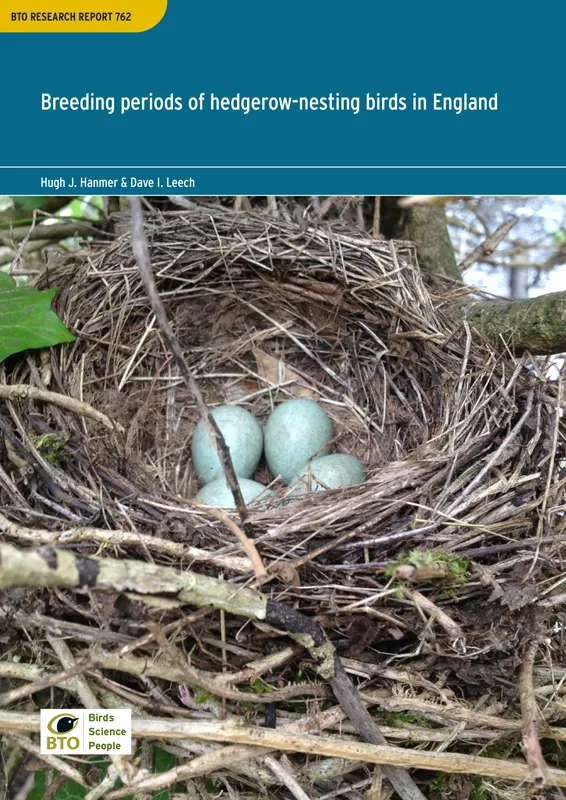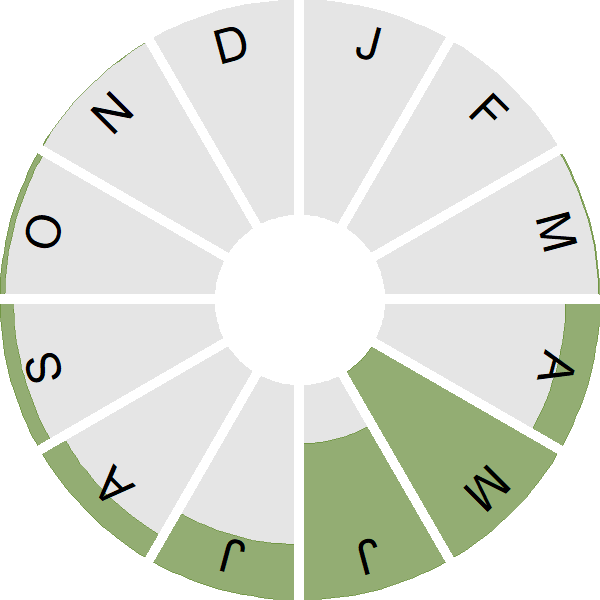Garden Warbler

Introduction
Garden Warbler is one of Britain's most nondescript birds earning it the true moniker of little brown job.
A warbler of dense scrub understorey and woodland edge, the Garden Warbler is more often noticed in well-wooded countryside rather than in gardens. It is evenly coloured brown with beige underparts, and has a stout black bill and beady black eye. Garden Warblers spend our winter months south of the Sahara.
The Garden Warbler comes into its own when it sings, with rich, fluty whistling notes. In addition to its lack of a black cap, to the practised ear its song distinguishes Garden Warbler from the commoner and more widespread Blackcap.
- Our Trends Explorer gives you the latest insight into how this species' population is changing.

Key Stats
Identification
ID Videos
This section features BTO training videos headlining this species, or featuring it as a potential confusion species.
#BirdSongBasics: Blackcap and Garden Warbler
Warbler Identification Workshop Part 2: Blackcap & Garden Warbler
Songs and Calls
Song:
Call:
Alarm call:
Status and Trends
Conservation Status
Population Change
Despite large short-term fluctuations in abundance, the CBC/BBS data suggest that the population may possibly be in long-term decline. Although the long-term trend does not raise alerts in this report due to wide confidence intervals, formal alerts have been raised in two of the last three reports. The BBS map of change in relative density between 1994-96 and 2007-09 indicates that strong decreases in southern and eastern Britain over that period contrasted with increases in the west and north. There has been a decline across Europe since 1980 (PECBMS: PECBMS 2020a>).
Distribution
Garden Warblers favour scrub, copses and woodland edge throughout England, Wales and southern and central Scotland; farther north they are distributed more patchily, occurring in northeast Scotland, Strathspey and along the Great Glen. Garden Warblers are scarce in Ireland.
Occupied 10-km squares in UK
or view it on Bird Atlas Mapstore.
or view it on Bird Atlas Mapstore.
European Distribution Map
Distribution Change
Since the 1968–72 Breeding Atlas there has been a 12% increase in Garden Warbler range in Britain & Ireland. These increases are most evident in the west and north of the range, in Ireland, Northumberland and Scotland. Increases are also apparent on low ground around the Fens and in Lancashire.
Change in occupied 10-km squares in the UK
or view it on Bird Atlas Mapstore.
or view it on Bird Atlas Mapstore.
Seasonality
Garden Warbler is a summer visitor, arriving from mid April. When not singing it is much harder to detect and is recorded at low levels during autumn migration.
Weekly pattern of occurrence
The graph shows when the species is present in the UK, with taller bars indicating a higher likelihood of encountering the species in appropriate regions and habitats.

Habitats
Breeding season habitats
Relative frequency by habitat
The graph shows the habitats occupied in the breeding season, with the most utilised habitats shown at the top. Bars of similar size indicate the species is equally likely to be recorded in those habitats.

Movement
Britain & Ireland movement
Foreign locations of birds ringed or recovered in Britain & Ireland
Dots show the foreign destinations of birds ringed in Britain & Ireland, and the origins of birds ringed overseas that were subsequently recaptured, resighted or found dead in Britain & Ireland. Dot colours indicate the time of year that the species was present at the location.
- Winter (Nov-Feb)
- Spring (Mar-Apr)
- Summer (May-Jul)
- Autumn (Aug-Oct)

European movements
EuroBirdPortal uses birdwatcher's records, such as those logged in BirdTrack to map the flows of birds as they arrive and depart Europe. See maps for this species here.
The Eurasian-African Migration Atlas shows movements of individual birds ringed or recovered in Europe. See maps for this species here.
Biology
Productivity and Nesting
Nesting timing
Egg measurements
Clutch Size
Incubation
Fledging
Survival and Longevity
Survival is shown as the proportion of birds surviving from one year to the next and is derived from bird ringing data. It can also be used to estimate how long birds typically live.
View number ringed each year in the Online Ringing Report.
lifespan
Survival of adults
Survival of juveniles
Biometrics
Wing length and body weights are from live birds (source).
Wing length
Body weight
Ring Size
Classification, names and codes
Classification and Codes
- Order: Passeriformes
- Family: Sylviidae
- Scientific name: Sylvia borin
- Authority: Boddaert, 1783
- BTO 2-letter code: GW
- BTO 5-letter code: GARWA
- Euring code number: 12760
Alternate species names
- Catalan: tallarol gros
- Czech: penice slavíková
- Danish: Havesanger
- Dutch: Tuinfluiter
- Estonian: aed-põõsalind
- Finnish: lehtokerttu
- French: Fauvette des jardins
- Gaelic: Ceileiriche-gàraidh
- German: Gartengrasmücke
- Hungarian: kerti poszáta
- Icelandic: Garðsöngvari
- Irish: Ceolaire Garraí
- Italian: Beccafico
- Latvian: darza kaukis
- Lithuanian: sodine devynbalse
- Norwegian: Hagesanger
- Polish: gajówka
- Portuguese: toutinegra-das-figueiras
- Slovak: penica slávikovitá
- Slovenian: vrtna penica
- Spanish: Curruca mosquitera
- Swedish: trädgårdssångare
- Welsh: Telor yr Ardd
- English folkname(s): Pettychap
Research
Causes of Change and Solutions
Causes of change
The causes of change in Garden Warbler abundance are unclear, but the decline is most likely to be driven by reduced productivity or juvenile survival.
Further information on causes of change
Garden Warbler abundance has varied alongside that of other trans-Saharan migrant warblers (Siriwardena et al. 1998b), probably reflecting the influence of changes in their winter environment. Despite large short-term fluctuations in abundance, the CBC/BBS data suggest that the population may be in long-term decline. Analysis of annual population changes and winter survival estimates across western Europe shows only a weak relationship between survival and population change, suggesting than long-term population change may be driven by reduced productivity or juvenile survival (Johnston et al. 2016). CES survival rates for adults have decreased, and there have been increases in nest failure rates and corresponding declines in the number of fledglings per breeding attempt. Post-fledging productivity, as measured by the CES, has also declined sharply since 1983. The negative effects of deer browsing are particularly strong for Garden Warbler (Holt et al. 2011) and hence a reduction in understorey habitat could potentially be a factor which has contributed towards the observed trends, though this has not been confirmed.
Information about conservation actions
The main drivers of change for Garden Warbler are not known and may possibly reflect changes during winter, but productivity may play a role and therefore conservation actions to improve breeding habitat could benefit this species. Mustin et al. (2014) found that the change in vegetation cover at 0.5 to 2 m above ground was the most important factor determining colonization or extinction by Garden Warbler, and suggested that habitat creation could help counteract possible future effects of future climate change.
The importance of understorey habitat to this species is also highlighted by another study which looked at the effects of deer browsing on bird species. The negative effects of deer browsing were particularly strong for Garden Warbler (Holt et al. 2011) and therefore actions to control deer numbers or exclosures to exclude deer are likely to help provide understorey habitat for this species, as well as other actions to encourage the growth of shrub layer vegetation.
Publications (2)
Breeding periods of hedgerow-nesting birds in England
Author: Hanmer, H.J. & Leech, D.I.
Published: Spring 2024
Hedgerows form an important semi-natural habitat for birds and other wildlife in English farmland landscapes, in addition to providing other benefits to farming. Hedgerows are currently maintained through annual or multi-annual cutting cycles, the timing of which could have consequences for hedgerow-breeding birds.The aim of this report is to assess the impacts on nesting birds should the duration of the management period be changed, by quantifying the length of the current breeding season for 15 species of songbird likely to nest in farmland hedges. These species are Blackbird, Blackcap, Bullfinch, Chaffinch, Dunnock, Garden Warbler, Goldfinch, Greenfinch, Linnet, Long-tailed Tit, Robin, Song Thrush, Whitethroat, Wren and Yellowhammer.
05.03.24
Reports Research reports

Birds of Conservation Concern Wales 4: the population status of birds in Wales
Author: Johnstone, I.G., Hughes, J., Balmer, D.E., Brenchley, A., Facey, R.J., Lindley, P.J., Noble, D.G. & Taylor, R.C.
Published: 2022
The latest review of the conservation status of birds in Wales. The report assessed all 220 bird species which regularly occur in Wales. There are now 60 species of bird on the Red List, with 91 on the Amber List and just 69 - less than a third of the total number of species - on the Green List.
06.12.22
Reports Birds of Conservation Concern


